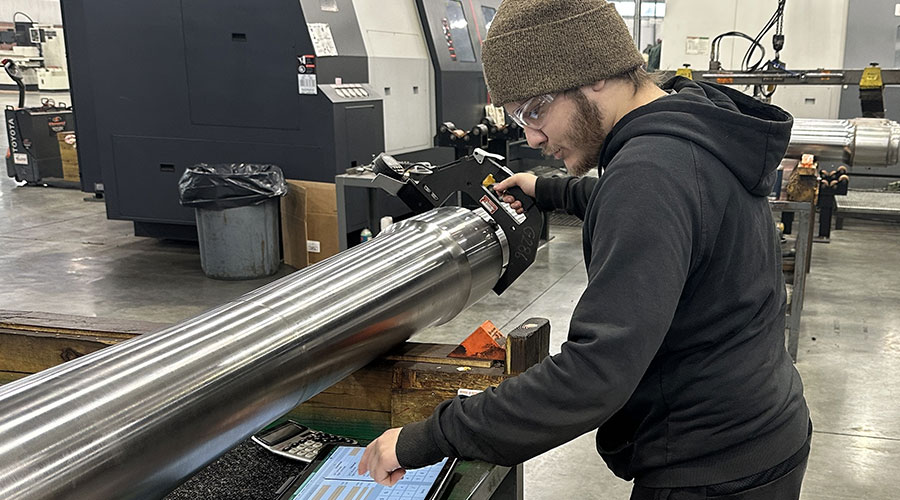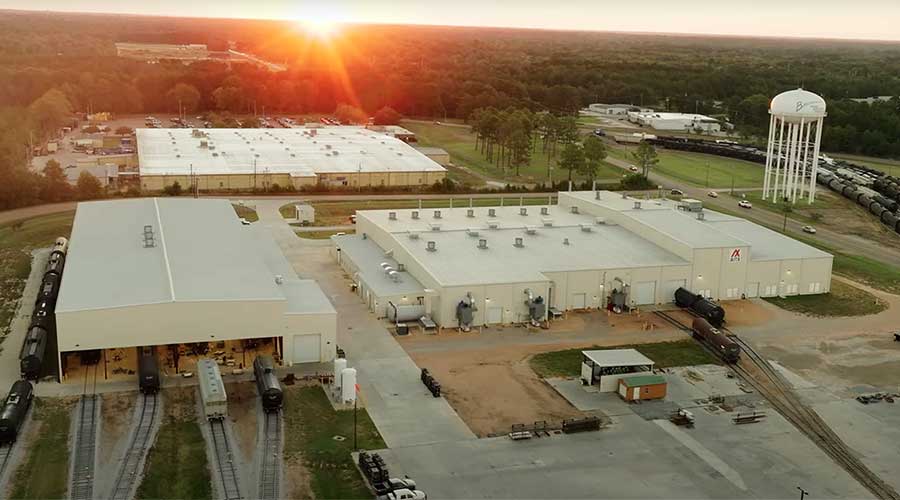Stay updated on news, articles and information for the rail industry
August 2019
Rail News: Mechanical
The plight of box cars — analysis by Richard Kloster

Ideally, when people see a problem, they do something about it before things get out of hand. But we don’t live in a perfect world, or work in a perfect industry, and sometimes it takes a crisis to shock people into acting.
The problem I’m referring to is the state of today’s box-car fleet. The shock I’m referring to is the looming retirement cycle that will result in the loss of up to 50,000 box cars very soon.
Forest products shippers generate two-thirds of all box-car loads, which annually totals $3.5 billion in freight revenue. Paper shippers rely on about 100,000 of these cars and about half are the newer spec, Plate F, 100-ton box cars built since the mid-1990s.
However, it’s the other half that presents real car supply risk to shippers. Between 1975 and 1980, there was a huge 110,000-car build cycle, of which 52,000 exist today. While these cars have 50-year maximum lives, they are typically retired at 42-43 years of age and currently have significant maintenance obsolescence risks. While the best ones may have five to seven years of remaining life, the majority will likely be retired much sooner. Who invests significant maintenance dollars in a 40-plus-year-old car with no guaranteed revenue stream? Not many car owners.
Over the last 20 years, box-car investment has been one new car for every 3.9 cars retired. If this trend continues, only 13,000 new cars will replace the 52,000 cars to be retired and the fleet will drop to barely 70,000 cars by the mid-2020s, putting the box-car fleet in danger of losing its commercial critical mass with its customer base.
While the demise of the box-car fleet is avoidable, it will require every stakeholder to consider new approaches open-mindedly, change certain behaviors and give up some long-held biases.
The only way for the fleet to maintain critical mass is to reinvest in it, but that would require the investing party to receive a fair return. New box cars are expensive, especially compared with old, depreciated equipment. Lessors were heavy investors in the 1990s when the fleet actually grew a little, but they were supplanted when TTX Co. began building box cars a decade ago and the fleet began declining again.
Ideally, box cars would be leased like other types of rail cars: on a fixed-rate, full-service operating lease. However, market forces have kept per-diem leasing the dominant lease type. In today’s deprescribed railroad car-hire environment, per-diem leasing has become an albatross that essentially prevents lessors from investing in new box cars. The reason: Per-diem leasing requires that hourly and mileage car hire rates be negotiated with every railroad that handles the car, loaded or empty. Absent a negotiated rate between a car owner and a car user, a “default rate” is applied.
The default rate is the crux of the problem. Set based on the lowest negotiated rate for a class of cars, default rates for most box cars are far below levels that support investment. Two parties can “negotiate” an extremely low sub-market rate on a single old, dilapidated box car in a class of cars that includes thousands of new investment-grade cars for the purposes of setting a low default “floor” rate in order to give themselves an advantage in future rate negotiations for that particular car class. This makes the downside risk so extreme that lessors have largely abandoned investing in new box cars.
Since deregulation in 1980, 1.6 million new rail cars have been built and leasing companies have been responsible for more than 70 percent of these cars, meaning they are the primary source of capital that finances the rail-car fleet. Nearly all other fleets have received adequate levels of new car investment. Only the box-car fleet faces such a dire future, and this is primarily due to supposedly “market based” car hire rules that artificially depress car owner compensation and essentially blocks investment from the industry stakeholders who are best positioned to solve this looming crisis.
Hopefully, the industry can come together on default rate reform. Otherwise, absent changes in behaviors and the system, may the box-car fleet rest in peace.
Richard Kloster is senior vice president and chief commercial officer of AllTranstek LLC, a private transportation consulting company that provides fleet management, technical and strategic consulting to the rail industry. In conjunction with FTR Intel, Kloster forecasts the rail equipment markets for a broad client base.
Keywords
Browse articles on box cars Richard KlosterContact Progressive Railroading editorial staff.


 2025 MOW Spending Report: Passenger-rail programs
2025 MOW Spending Report: Passenger-rail programs
 Gardner steps down as Amtrak CEO
Gardner steps down as Amtrak CEO
 Guest comment: Oliver Wyman’s David Hunt
Guest comment: Oliver Wyman’s David Hunt
 Women of Influence in Rail eBook
Women of Influence in Rail eBook
 railPrime
railPrime







